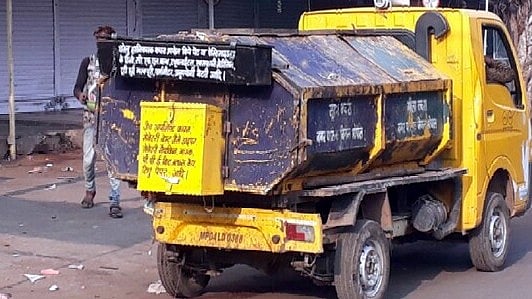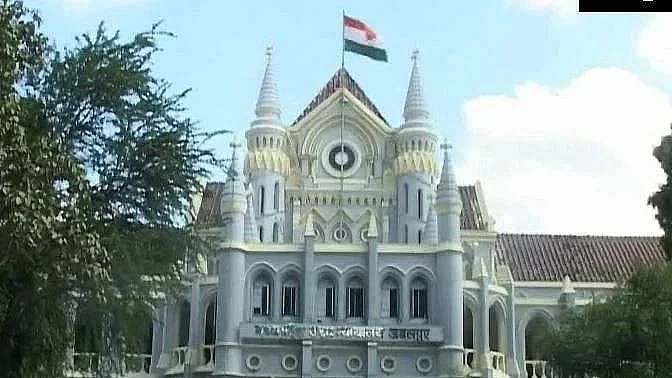Past, the foster child of quietness, whispers fairy tales into the ears of a visitor to Birla Museum, part of Lakshmi Narayan temple in Bhopal. It is located on the Arera hillocks garnished with green trees. Below it, a black asphalt road looking like the back of a tortoise lies. The museum was set up in 1971, but collection of artefacts began from 1960s.
But a visitor should have an ear to listen to the stories of the by-gone days. This foster child of quietness has befriended countless visitors to the museum over the years and had numberless chinwags with them. Upon entering the museum, a tourist finds a fine garden where eons gather lores through numerous icons of Vishnu, Shiva, Parvati and other deities. Endless streams of life flow into these stone-made figurines. Each of them has a yarn to narrate.
A 10th century figurine made of sandstone, portraying the wedding of Uma and Maheshwar or Shiva and Durga, is timeless. One will fall short of words to describe its vivacity. The Lord is sporting a mysterious smile, and his eternal bride is blushing. The artisans took great care of the attires the Lord and His bride were in.
In the Development of Hindu Iconography, JN Banerjee wrote: “The central Indian artists of the pre-Christian period indicate the garments worn in those days in diverse ways, and in many figures of the Gupta and medieval period, dress is represented with great care.” There is an icon of Dashavataras (the ten incarnations) of Vishnu in the museum, and those who have gone through the pages of the Geet Govindam by Jaydev know how he portrayed these ten incarnations. The idol of Vishnu is at the centre.
Under the Lord’s feet, there is an elegantly curved lotus, and beneath it, the netherworld exists. Then, there is Shalabhanjika (8th to 10th century), an epitome of eternal beauty, an icon of India. There are many stories about the mysterious smile the countenance of Monalisa wears, but only a few know how attractive and mysterious the smile and sensuous look of Shalabhanjika is, though the Beauty Queen of ancient India is made of stone. She waits, with her elegant smile and look, to take a voyager to the past, and seems to be whispering into his heart the tales of her life and time. Mute as she is, she speaks through her eyes.
The name Shalbhanjika also signifies many things in Hindu, Buddha and Jain scriptures, as Monalisa’s smile does. A huge icon of Varaha Avatar (Vishnu’s incarnation as boar) has been kept in the centre of the museum. Jaydev said Lord had taken this form to save the earth. Once a stone-made replica of the earth was on the snout of the boar, but it has been broken, with the passage of time. The rest of the figures engraved on the back of the statue of Varaha Avatar are intact. The numerous figurines, including all Indian deities, carved on the body of the statue, are tiny, but symbolise something or the other.
Banerjee wrote: “The Eran Inscription of the time of Toramana engraved on the chest of colossal sandstone image of a boar refers to Vishnu (who in his Varaha Avatara) in the act of the lifting up the earth, caused the mountain to tremble, with the blows of his hard snouts.” There are 35,000-year-old hand axes made of stones, which were discovered from the Kaliasot area of Bhopal.
A settlement of early men, historians say, may have bourgeoned around the state capital. Over an-inch double-edged blade made of white stone belonging to early men was also there. According to consultant of the museum, there are around 400 statues. An unseen script is written in their marrow. Each image seems to be still and secret, but they are not senseless, because they remember the forgotten and the obscure.












